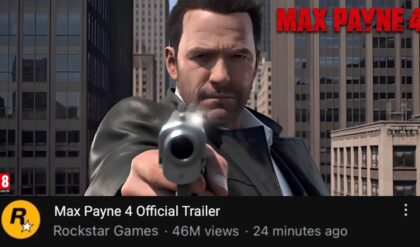The sentiment that the cameraman for Adolescence deserves a raise has been echoed widely, and it’s easy to see why when you dive into the technical mastery behind the Netflix series. Adolescence, a four-part British crime drama that premiered on March 13, 2025, has gripped audiences not just with its raw storytelling but with its groundbreaking cinematography. Each episode is filmed in a single, continuous take—a feat that’s as emotionally immersive as it is technically demanding. Let’s break down why the cameraman’s work is so extraordinary, the challenges they faced, and why this sentiment resonates so strongly with fans, while also exploring the broader context of the show’s production and its impact.
The Cameraman’s Feat: A Technical Marvel
Adolescence, directed by Philip Barantini and co-created by Stephen Graham and Jack Thorne, follows the harrowing story of 13-year-old Jamie Miller, arrested for the murder of a classmate, and the ripple effects on his family and community. What sets the series apart is its one-take approach, where each hour-long episode unfolds in real time without cuts, plunging viewers into the chaos and emotional weight of the narrative. This isn’t just a stylistic choice—it’s a deliberate tool to heighten tension and force the audience to experience every moment as the characters do, with no escape.
The cameraman, primarily cinematographer Matt Lewis, along with camera operator Lee David Brown, executed this vision with staggering precision. According to a Los Angeles Times article from March 11, 2025, the camera work was likened to a “beautiful dance,” with Lewis and Brown passing the camera between them to ensure seamless continuity across diverse locations—through houses, police stations, schools, and even into moving vehicles. A behind-the-scenes video released by Netflix, as noted in a Daily Record piece on March 16, 2025, shows a cameraman jogging alongside police as they break down a door, then clipping the camera onto a crane for the next sequence, and even mounting it on a drone for aerial shots. This fluidity required not just physical stamina but an almost telepathic coordination with the cast and crew.
The second episode, in particular, has been a focal point of praise. A No Film School article from March 18, 2025, highlights a “crazy” shot where the camera follows a kid running out of a window, through a schoolyard, past a murder site, and back to the school—all without cutting. This sequence, which took several tries to perfect, showcases the cameraman’s ability to navigate complex environments while capturing the emotional intensity of the scene. Fans on X have been vocal about this achievement, with posts calling the camera work “stupendous” and suggesting the operator “deserves ALL the Emmys,” reflecting the awe at the sheer skill involved.
The Challenges: More Than Just Holding a Camera
Filming in one take isn’t just about keeping the camera rolling—it’s a logistical nightmare that demands perfection from everyone involved. A Guardian article from March 22, 2025, details how Barantini and Lewis meticulously planned each episode, mapping out locations with miniature models and choreographing every movement before actors even set foot on set. For the first episode, which starts with a police raid, they had to find a real house just a three-minute drive from the studio set of the police station to maintain the real-time illusion, as Barantini explained.
The physical demands on the cameraman were immense. A PetaPixel article from March 23, 2025, quotes Lewis describing the process as “very different to normal,” noting that it took weeks to fully grasp the concept of one camera moving through space without cuts. The team used a DJI Ronin 4D camera, typically reserved for action sequences, for its flexibility, as mentioned in a Netflix Tudum post on March 20, 2025. This allowed the cameraman to transition from rugged handheld shots to smooth, stabilized movements without changing equipment, running through streets, climbing stairs, and even passing the camera to a drone operator mid-shot.
But the challenges weren’t just technical—they were emotional too. The cast, including Stephen Graham and newcomer Owen Cooper, had to deliver raw, uninterrupted performances, and the cameraman had to match that intensity, capturing every nuance without the safety net of multiple takes. A Los Angeles Times piece from March 12, 2025, notes that the one-take approach traps the viewer in the characters’ world, mirroring their lack of escape, and the cameraman’s role in creating that immersion cannot be overstated. Fans have pointed out moments where the cameraman’s presence is briefly visible—like in episode two, where a TikTok user spotted a crew member removing the camera from a drone, as reported by LADbible on March 24, 2025—but these rare glimpses only highlight the complexity of the task, not a failure.
Why the Cameraman Deserves a Raise
The sentiment that the cameraman deserves a raise isn’t just about the technical skill—it’s about the impact of their work on the show’s success. Adolescence has been a global phenomenon, racking up over 24 million views in its first four days and becoming the most-streamed show in the US, according to PetaPixel. The one-take format has been a major talking point, dominating conversations in the UK to the point where the prime minister referenced it in parliament, as noted in the Guardian. Fans and critics alike have hailed the cinematography as a game-changer, with a Time article from March 17, 2025, praising Lewis’s “staggering stamina” and emotional endurance.
The cameraman’s work doesn’t just serve the story—it elevates it, making Adolescence a visceral experience that forces viewers to confront uncomfortable truths about youth, masculinity, and societal pressures. A Roger Ebert review from March 13, 2025, calls the series “unbearable” in its intensity, a testament to how the camera’s relentless gaze mirrors the characters’ anguish. Posts on X echo this, with users saying they felt “claustrophobic” during the opening sequence and marveling at being “in the room, cell, car” with the characters. This immersion is a direct result of the cameraman’s ability to execute Barantini’s vision, making the audience feel like they’re living the story in real time.
Beyond the emotional impact, the cameraman’s contribution has practical value for the production. The one-take approach, while risky, likely saved time in post-production by eliminating the need for extensive editing, though it required weeks of rehearsal and multiple takes to get right—10 takes per episode, with two takes shot per day, as per a Los Angeles Times article from March 11, 2025. The chosen takes are a testament to the cameraman’s consistency under pressure, delivering a final product that feels like a documentary, as noted by LADbible. In an industry where cinematographers are often underpaid relative to their impact—top DPs might earn $5,000 to $20,000 per week on a high-budget series, per industry standards, while facing grueling hours and physical demands—a raise feels like a small ask for work that has defined a cultural moment.
The Broader Context: A Collaborative Triumph
While the cameraman’s role is rightfully celebrated, it’s worth noting that Adolescence’s success is a team effort. Barantini’s direction, honed through his previous one-take project Boiling Point, set the stage for this achievement, as detailed in a Guardian piece. The cast’s ability to perform without breaks—especially Owen Cooper, who at 15 delivered a performance that a Roger Ebert review called “quicksilver,” and Erin Doherty, whose episode three showdown with Cooper left fans in awe—gave the cameraman something worth capturing. Stephen Graham, who also co-wrote the series, described the process as “engrossing” and likened it to a “state of zen,” per the Los Angeles Times, highlighting how the one-take method allowed everyone to be fully present.
However, the cameraman’s role is uniquely demanding within this collaboration. Unlike the actors, who could rehearse their lines and movements, or the director, who could plan from behind the monitor, the cameraman had to be in the thick of it—physically and emotionally—every second of every take. A TheTab article from March 24, 2025, notes that even seasoned actor Ashley Walters admitted to messing up a take, underscoring the pressure on the entire team, but the cameraman had no room for error. If they stumbled, the entire take would be ruined, a reality that makes their achievement all the more impressive.
A Critical Perspective: Does the Gimmick Overshadow the Story?
While the cameraman’s work is undeniably impressive, it’s worth examining whether the one-take approach occasionally overshadows the story itself. A Los Angeles Times review from March 12, 2025, points out that the technique can “split your attention” between the narrative and the filmmaking, potentially taking viewers out of the story as they marvel at the “how” rather than the “what.” This raises a question: does the cameraman’s brilliance sometimes draw focus away from the show’s deeper themes, like the exploration of male rage, incel culture, and societal pressures on youth, as highlighted in a Time article?
On balance, the one-take method enhances rather than detracts from the story. The Guardian review from March 12, 2025, calls the series “the closest thing to TV perfection in decades,” noting that the technical accomplishments are matched by the performances and script. The cameraman’s work ensures that the audience feels the weight of every moment—whether it’s the chaos of a police raid or the quiet devastation of a family trying to hold itself together—making the themes of Adolescence hit harder. The technique isn’t a gimmick; it’s a storytelling tool, and the cameraman wielded it with such skill that it became inseparable from the narrative’s impact.
The Verdict: A Well-Deserved Raise
The cameraman for Adolescence—Matt Lewis, with support from Lee David Brown—absolutely deserves a raise, and the sentiment resonates because their work has redefined what’s possible in television. They didn’t just hold a camera; they danced through a high-stakes ballet of movement, emotion, and precision, delivering a series that has captivated millions and sparked global conversations. Their physical endurance, technical skill, and emotional attunement to the story elevated Adolescence into a modern marvel, as a No Film School piece put it, and fans are right to call for recognition.
In an industry where cinematographers often work in the shadows of directors and actors, the outpouring of praise for Adolescence’s camera work is a reminder of their critical role in bringing stories to life. Whether it’s a literal raise or the metaphorical raise of their profile in the industry—Lewis and Brown are likely to be in high demand after this—their contribution has earned them every accolade coming their way. If you haven’t watched Adolescence yet, it’s streaming on Netflix, and it’s worth experiencing for the camera work alone, though the story will grip you just as fiercely. Want to dive deeper into the show’s themes or its one-take predecessors like Boiling Point? Let me know!





